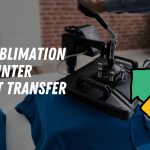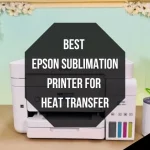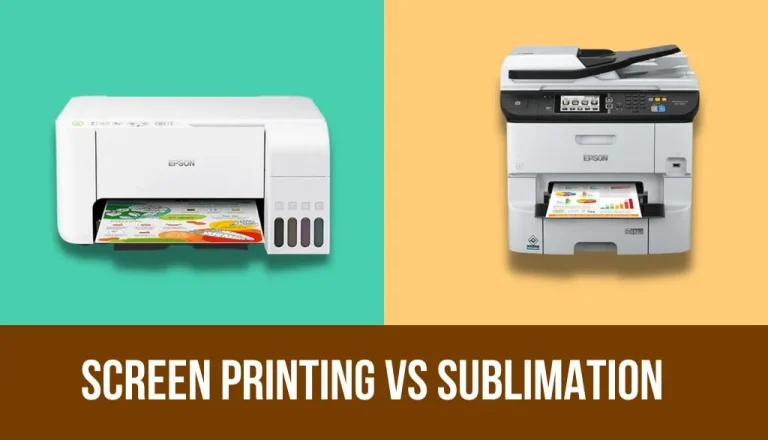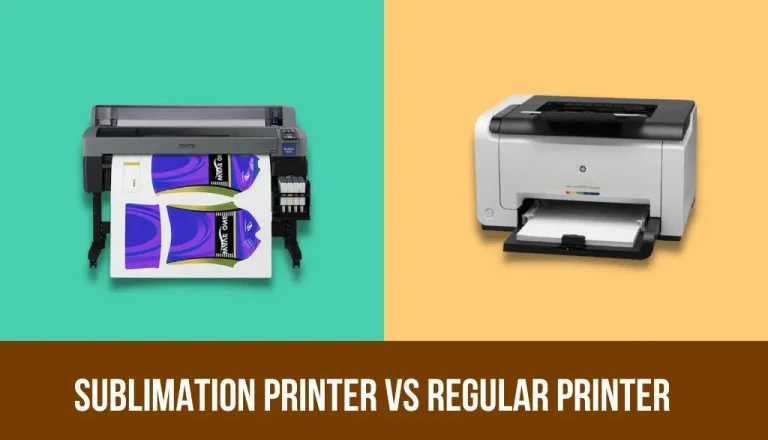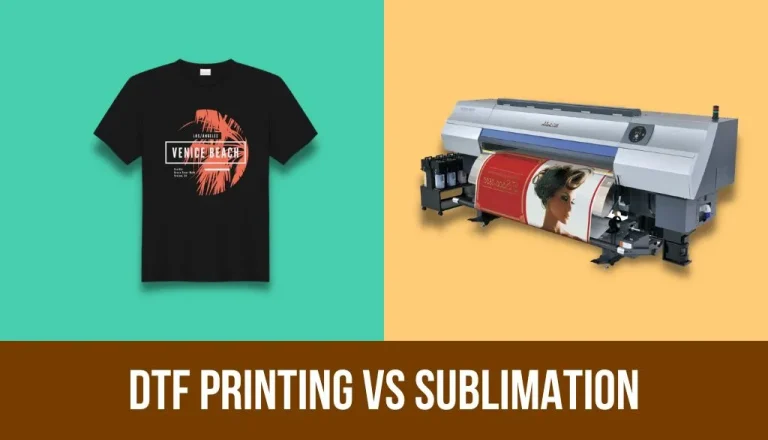Sublimation Printing vs Heat Transfer: Which is Right for You?
Sublimation printing is the well mostly demanding product nowadays. Sublimation printing is mostly used in printing t-shirts mugs and more. It depends on the material, the market size, and the printing design whether the two printing methods are good or excellent.
There are advantages and disadvantages to each method. In this article, I will explain sublimation printing vs heat transfer and their printing method on regular printers. So just read till the end.
Sublimation Printing vs Heat Transfer which is better?
People often compare sublimation printing vs. heat transfer when it comes to decorating garments. Depending on your business needs and what you are trying to achieve and decorate, we can’t necessarily tell you which is best.
What is Sublimation?
As with heat transfer paper, sublimation involves printing an image or design on special paper and applying it to a substrate using heat. The process is different however because of the science behind it. As soon as the ink is heated it transforms from a solid into a gas.
As a result of this gas, the fabric becomes dyed. The ink in sublimation dyes the fibers of the garment making it ideal only for white or light garments.
What is Heat Transfer Paper?
Using a heat press you can transfer an image from heat transfer paper to a garment or hard surface. Heat transfer paper comes in two types: inkjet or laser. The type of printer you use depends on the paper type.
Inkjet printers cannot use laser transfer paper and vice versa. Most office printers can use heat transfer paper. It is recommended that you use a white toner printer such as OKI. if you want to get the results.
Specially designed for garment decoration these printers apply white toner to colored or dark garments to create vibrant full-color prints.
Differences Between Sublimation and Heat Transfer Paper:
Apart from the science of the transfer process, sublimation and heat transfer paper differ in many other ways. In addition to substrate types, feel, durability, weeding, and startup costs, there are also differences between these systems.
1. Garment Colors
You can check the sublimation printing vs. heat transfer to different colors of garments using both methods. Heat transfer printing allows you to transfer images to virtually any color substrate. No matter what color you choose you can transfer it.
Sublimation on the other hand can only be used on garments that are light in color. Processes like this are based on science. In the transfer process, sublimation dyes the fabric so dark colors cannot be sublimated.
It is still the biggest limitation of sublimation even though there are workarounds such as heat transfer vinyl that you can sublimate onto.
2. Substrate and Fabric Type
The only polyester fabrics or hard surfaces that you can sublimate are white and light-colored polyester fabrics. Cotton or any other fabric cannot be sublimated.
If you want to sublimate on a mug or other item. It must have a polymer coating that allows the process to take place.
Almost any fabric can be used with heat transfer paper including polyester cotton blends nylon and more.
In addition to polymer coatings, you can also decorate hard surfaces without them. When it comes to heat transfer paper there are many limitations.
3. Durability & Feel or “Hand” of the Image
Shirt dyes with polyester do not have any feel to them because sublimation occurs when the fabric is dyed. With its light hand, it is very easy to work with. As well as being more durable than heat transfer paper.
It contains cracks like a heat transfer paper design over time it is possible to feel the design on the shirt because heat transfer paper leaves an image on top of the garment.
A variety of factors can affect the feel and hand of heat transfer paper, including the type and brand of the paper used as well as whether a RIP program or a T.seal finishing sheet are used.
To start noticing fading or carking in the design after washing heat transfer paper garments about 25 to 30 times is recommended.
If you rasterize your design with RIP software you can extend the life of your shirt and design.
4. Weeding
Heat transfer paper may require you to weed or cut and trim your design before transferring it to your substrate depending on its type. There is no self-wedding transfer paper available for inkjet printers.
Laser heat transfer paper does however come with some self-weeding options. In the market self weeding transfer papers are available in two steps.
With sublimation, there is no wedding or cutting required. There is no need to weed or cut since only the sublimation ink-covered parts of the paper are sublimated.
Startup Costs
Between sublimation and heat transfer paper heat transfer paper is the cheaper option. The only things you need are an inkjet or laser printer a heat press heat transfer paper and the substrates you want to decorate.
Invest in an OKI white toner printer or use a standard printer. Custom apparel will be more expensive if you use an OKI white toner printer. The cheapest option is to start with a regular inkjet or laser printer.
Start-up costs for sublimation are higher than for heat transfer, printer, mugs, screen process, machine, vinyl printing, skateboard, Reddit, and paper.
However, sublimation still has a higher price tag than heat transfer paper with an inkjet or laser printer. To sublimate you need a sublimation printer a heat press and sublimation paper.
Frequently Asked Questions:
Excellent durability is provided by sublimation. To know the difference between sublimation printing vs. heat transfer, heat transfer paper allows you to customize cotton, polyester, and cotton-poly blends in light and dark colors. Additionally, it adds a layer of protection. Sublimation has a lower durability than dye sublimation.
Cotton fabrics are best suited for screen printing since the ink adheres better to them. Printing with sublimation is suitable for fabrics with high polyester content, such as polyester blends, polymer-coated fabrics, and light-colored polyesters.
Despite this, sublimation designs look more vibrant, last longer, and do not have the same obvious feel as heat transfers.
A sublimation print has outstanding quality. Fine lines and details can be printed in multiple colors that will be vivid and sharp. Embedded into fabric fibers, the color does not wash out easily nor crack or peel. Long-lasting and durable, sublimation prints last for years.
It is best to use DTG printing for black and dark colors. The image’s color range. White is one of the colors that are limited by sublimation. Printing a DTG or DTF image with white may be a good choice if your image contains white.
Final Verdict:
If you want to decorate garments and substrates of different colors and types, you will have to choose which is right for you. Your investment level must also be considered.
Sublimation is a great option to know the difference between sublimation printing vs. heat transfer if you specialize in white and light-color polyester apparel there will be a light hand to your prints as well as great durability and washability.
In any case heat transfer paper is your best bet if you would like to print on any material or color. Start with a low-cost OKI white toner printer, such as the OKI pro8432 WT and as your business grows you can invest in a higher-quality OKI white toner printer.
There are two excellent ways to decorate garments sublimation and heat transfer paper. A company and its customers need to determine what is best for you.





